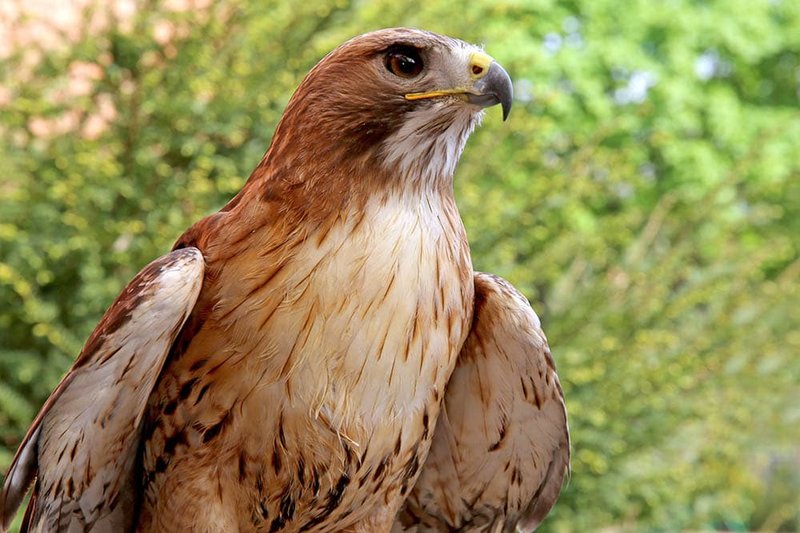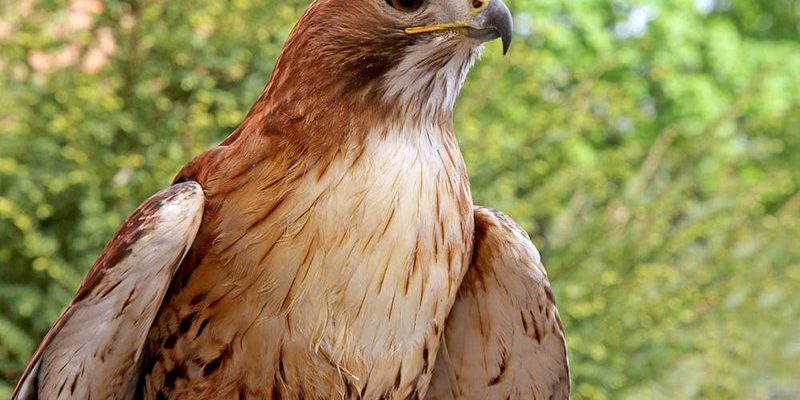
Picture this: you’re a red-tailed hawk soaring high above a sprawling landscape, eyes sharp and ready to spot potential meals. Your world changes with the seasons, and so do your hunting strategies and nesting habits. This ability to change has helped red-tailed hawks become one of the most common raptors in North America. Their adaptability is a big part of what makes them so successful.
Let’s take a closer look at how red-tailed hawks adjust their lifestyles to different environments, from open fields to urban areas, and even through seasonal changes.
Physical Adaptations for Survival
One of the most noticeable features of red-tailed hawks is their striking appearance. Their rusty-red tail feathers are not just for show; they play a crucial role in their identity and behavior. These adaptions help them camouflage against the hues of the sky and trees, making it easier to hunt unsuspecting prey. This is especially important when they’re perched on trees or fence posts, waiting for the perfect moment to dive down.
Their size also contributes to their versatility. With a wingspan of about 4 feet, red-tailed hawks can easily soar on thermals, conserving energy while scanning the ground for movement. The broad wings enable them to adapt to various environments, whether they’re gliding over vast prairies or maneuvering through dense forests. It’s almost like they have a built-in GPS, guiding them through their chosen habitat with precision.
In addition to physical features, their keen eyesight sets them apart. Imagine having vision that’s 8 times sharper than humans! This exceptional eyesight allows them to spot small mammals from great heights, ensuring they can hunt effectively regardless of their surroundings. Their visual adaptations are a game changer, allowing them to thrive in diverse habitats.
Hunting Techniques Across Different Environments
Red-tailed hawks are resourceful hunters, and their techniques change based on their environment. In open areas like fields and grasslands, they often use a hunting method called “perch-and-pounce.” They’ll find a high vantage point, like a tree branch, and scan the ground for movements. Once they spot a potential meal, they swoop down at incredible speeds to catch it off guard.
In wooded areas, their hunting style becomes more stealthy. They may use their acute hearing to listen for sounds of rustling leaves or scurrying prey. This adaptability is like switching from a full-on sprint to a strategic slow crawl. They maneuver through branches and underbrush, using their sharp talons to capture small mammals or birds hiding in the foliage.
Urban environments present unique challenges, but red-tailed hawks have risen to the occasion. You might spot them perched on buildings or electric poles, seamlessly integrating into city life. In these locales, they often hunt pigeons and rats, taking advantage of the abundance of urban wildlife. It’s a perfect example of how adaptability allows these hawks to thrive, proving that nature finds a way, even in the concrete jungle.
Nesting Behaviors and Habitat Choice
When it comes to nesting, red-tailed hawks are choosy. They prefer high, sturdy places to build their homes, which offer safety from predators. Trees are the classic choice, but they can also adapt to nesting on cliffs, buildings, or even towers. This flexibility helps them maximize their chances of finding a safe spot, no matter where they are.
The hawks typically return to the same nesting site year after year, which shows their loyalty to successful habitats. They often reinforce their nests during the off-season, adding new materials like twigs and grass. This dedication to their nesting sites is crucial for raising their young, providing them with a safe environment to grow and learn about their world.
Interestingly, the choice of habitat also impacts their feeding habits. In forested areas, they may rely on different prey compared to those living in open fields. By choosing diverse nesting sites, red-tailed hawks ensure that they can always find the right balance of food and safety for their families.
Migration Patterns and Seasonal Adaptations
Not all red-tailed hawks migrate, but those that do have interesting journeys. Some may travel south for the winter, seeking warmer climates while others remain in their territories year-round. The decision to migrate often depends on food availability and weather conditions, showing how these birds respond intelligently to their environment.
Throughout the changing seasons, red-tailed hawks adjust their behaviors accordingly. In spring and summer, you’ll see them more active, hunting frequently and raising their young. As winter approaches, they might shift to different hunting grounds if their usual spots become barren. This adaptability is key to their survival, allowing them to make the most out of each season’s resources.
During harsh winters, they may also change their diet to include more readily available prey, like small rodents or even carrion. This shift not only keeps them fed but also showcases their remarkable ability to adapt to changing conditions. It’s almost like watching a master chef adjust a recipe based on what ingredients are available.
Social Behavior and Communication
Red-tailed hawks are known for their strong communication skills. They rely on a variety of calls and body language to convey messages to each other. These vocalizations can vary based on the situation, such as alerting a mate to danger or calling out to their young. This level of communication is critical for cooperative hunting and parenting, showcasing their social nature.
Interestingly, during the breeding season, you might notice them engaging in aerial displays, soaring together in elaborate flight patterns. This behavior not only strengthens their bond but also helps them establish territory. Think of it as a dance in the sky, where they demonstrate their strength and agility to potential rivals.
While they may appear solitary at times, red-tailed hawks often benefit from living in proximity to others. By staying near fellow hawks, they can share information about food sources and potential threats. This adaptability in social behavior enhances their survival chances, revealing just how clever they can be.
Red-tailed hawks are more than just beautiful birds; they’re symbols of resilience and adaptability. Their ability to adjust to various environments, from open fields to bustling cities, highlights their intelligence and resourcefulness. Whether it’s through their hunting strategies, nesting choices, or communication skills, these hawks have proven they can thrive in changing landscapes.
What’s truly captivating is how they embrace their surroundings, using every tool at their disposal to survive and flourish. As we marvel at these incredible creatures, it’s a reminder of the beauty of nature’s adaptability. Next time you see a red-tailed hawk soaring above, take a moment to appreciate all the ways they’ve learned to navigate their world. It’s not just about survival; it’s about thriving in the face of challenges.

